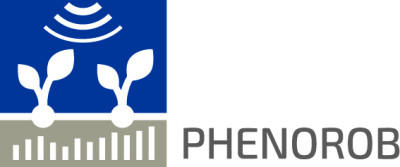Phenorob SBR
Contact

Justus Detring
Further Information
Laufzeit:
02/2022 – 05/2025
Projektteam:
Justus Detring,
Dr. Abel Barreto,
Dr. Stefan Paulus,
Prof. Dr. Anne-Katrin Mahlein
Abteilung:
Förderung:
PhenoRob (DFG)
Kooperation(en):
Forschungszentrum Jülich (Kwabena Agyei, Robert Koller), Fraunhofer IAIS (Priya Priya, Prof. Christian Bauckhage)
Background
"Syndrome des Basses Richesses" (SBR) is one of the latest sugar beet diseases described in literature. It can cause tremendous economic damage to sugar beet farmers by heavily decreasing fresh mass and sugar yield of sugar beet. Currently two phloem-limited Pathogens are known to cause SBR: 'Candidatus Arsenophonus phytopathogenicus' and 'Candidatus Phytoplasma solani' which are both transmitted by the economic vector Pentastiridius leporinus. Distinct symptoms are asymmetrical young leaves, chlorotic/necrotic older leaves and brownish discoloration of the tap root vascular tissue. Current disease control measures are adaptation of the crop rotation to reduce the vector population and cultivation of resilient sugar beet varieties. The vast spread of the vector infestation area over Europe increases the demand for resilient sugar beet varieties. Robust screening methods and a holistic phenotypic description of SBR are missing. With hyperspectral imaging the complete electromagnetic spectrum which is reflected by for instance the sugar beet canopy can be measured and analyzed. The aim of this project is to characterize and quantify the spectral response of sugar beet leaves induced by SBR, caused by 'Candidatus Arsenophonus phytopathogenicus' for robust high throughput variety screening.
Methods
To characterize and quantify the spectral response of sugar beet leaves induced by the SBR, sugar beets of different varieties are inoculated with laboratory reared Pentastiridius leporinus adults which are infected with 'Candidatus Arsenophonus phytopathogenicus'. After the inoculation the sugar beets are measured with hyperspectral imaging and non-imaging sensors for 2-3 months. After the monitoring period, tissue samples from the tap roots are collected for pathogen diagnostic via qPCR.
Current results
First results show that SBR-induced spectral changes can be detected early with hyperspectral measurements.
Furthermore, the SBR disease progress can be monitored by vegetation indices.
Funding
This work has been funded by the Deutsche Forschungsgemeinschaft (DFG, German Research Foundation) under Germany's Excellence Strategy – EXC 2070 – 390732324

Contact







